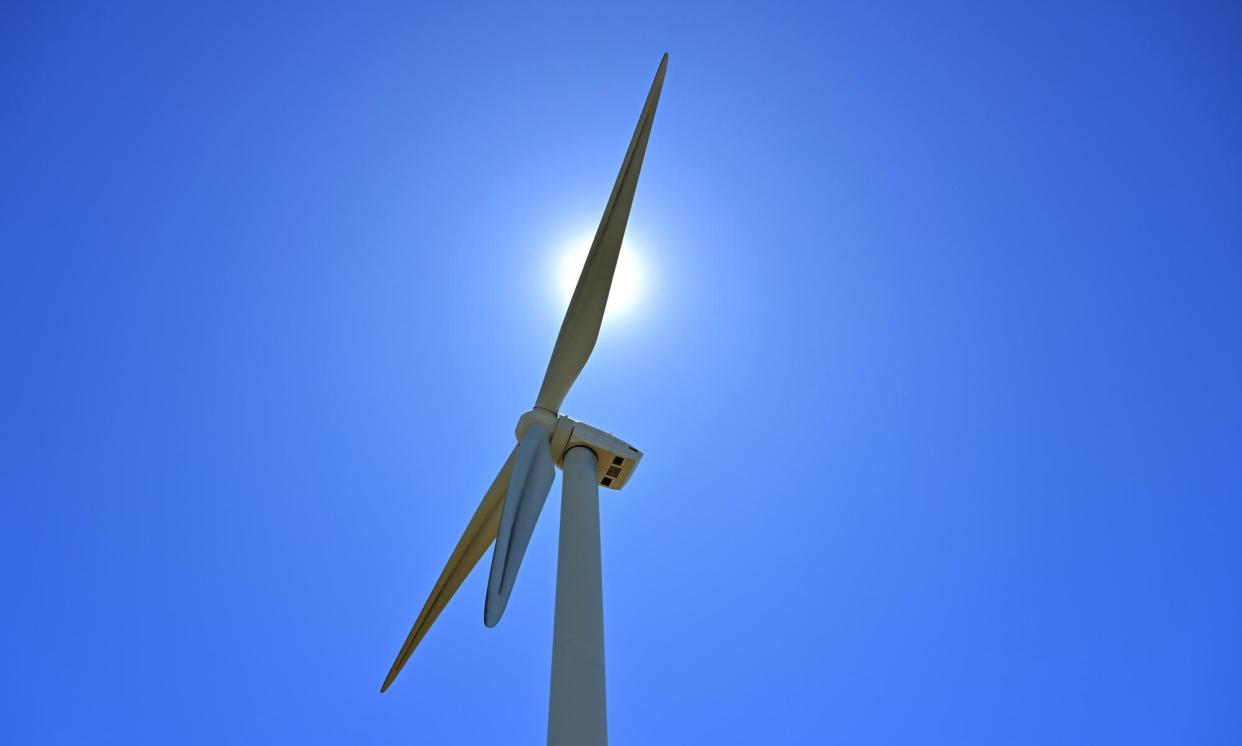Tanya Plibersek rejects claims renewable projects are being held up by approval delays

Tanya Plibersek has said she is approving windfarms faster than any previous environment minister, rejecting industry claims the sector faces deteriorating investment conditions and lengthening delays.
Renewable energy firms have raised concerns that securing environmental approval is becoming more difficult, particularly for wind. Challenges are unlikely to ease soon, given the government’s recent decision to postpone conservation law reforms until after the next election, putting at risk emissions reduction goals, they say.
However, Plibersek denied her department’s handling of proposals under the Environment Protection and Biodiversity Conservation (EPBC) Act was hampering the industry’s advance.
Related: Australian renewable sector recorded ‘alarming’ slowdown in 2023, energy body finds
“I am approving onshore wind projects at the fastest rates in Australian history,” she told Guardian Australia. “On average, the Labor government is approving onshore wind projects up to three times quicker than the previous Liberal and National governments.
“I have ticked off enough renewable energy projects to power almost 3m homes – that includes three huge new windfarms that will power 623,000 homes,” Plibersek said. “It’s important that we support renewable energy projects, but it has to be the right kind of development, in the right place, done in the right way.”
Precise comparisons between governments are difficult since Plibersek inherited many projects from her predecessor, Sussan Ley.
Industry analysis supplied to Guardian Australia indicates 10 onshore windfarms won environment department approval during Plibersek’s 23 months in office, requiring an average of 112 weeks from application to decision.
Over a similar stint at the end of the Morrison government, Ley’s department approved at least 10 windfarms, raising doubts approvals were getting ticked off three times faster as Plibersek has claimed, one senior industry official said.
Simon Corbell, the chief executive of the Clean Energy Investor Group, said the approval process was stacked against developers. Additional information requests, for instance, “stopped the clock” but routinely added years to the procedure.
“We’re aware of multiple projects owned by our members which have been in the EPBC process for several years,” Corbell said. It was common for firms to get multiple requests for further information, such as requiring additional ecological surveys, that added years to the process.
“In one case I’m aware of, several years later, [a developer got] another one, which again resulted in a further stop-the-clock decision,” he said. “Right now, the EPBC legislation is one of the biggest issues for our sector.”
A chorus of concern has been building about the pace of construction and connection of new wind and solar plants in Australia.
The Clean Energy Council last month warned of an “alarming” slowdown in new projects securing final investment signoff, quite apart from environmental or planning approval. All up, $1.5bn was secured for new renewable projects in 2023 – less than a quarter of the $6.5bn tally for 2022 – with no windfarms among them.
Over the past five years, about 1.3 gigawatts of windfarms has been approved on average annually. That tally, though, is only about a third of the 4.3GW needed to be installed each year if the government’s 2030 target of powering the grid with 82% renewables is to be reached, according to the Australian Energy Market Operator.
The government has sought to turbo-charge development with its capacity investment scheme (CIS) that will guarantee a floor and ceiling price for generation. The energy minister, Chris Bowen, on Monday announced the first CIS auction for 6GW of new renewables – the single largest such tender in Australian history.
Corbell said stresses on the approval process were “only going to increase once the CIS starts to roll out”.
“You’re going to have projects that are contracted or provided with a degree of underwriting support [that] potentially still need to progress through federal environmental approvals or state planning agreements,” he said. “So that’s going to be really significant pressure.”
Plibersek said environmental approval decisions would accelerate for renewables and critical minerals projects after her department secured a $100m spending increase.

 Yahoo News
Yahoo News 
